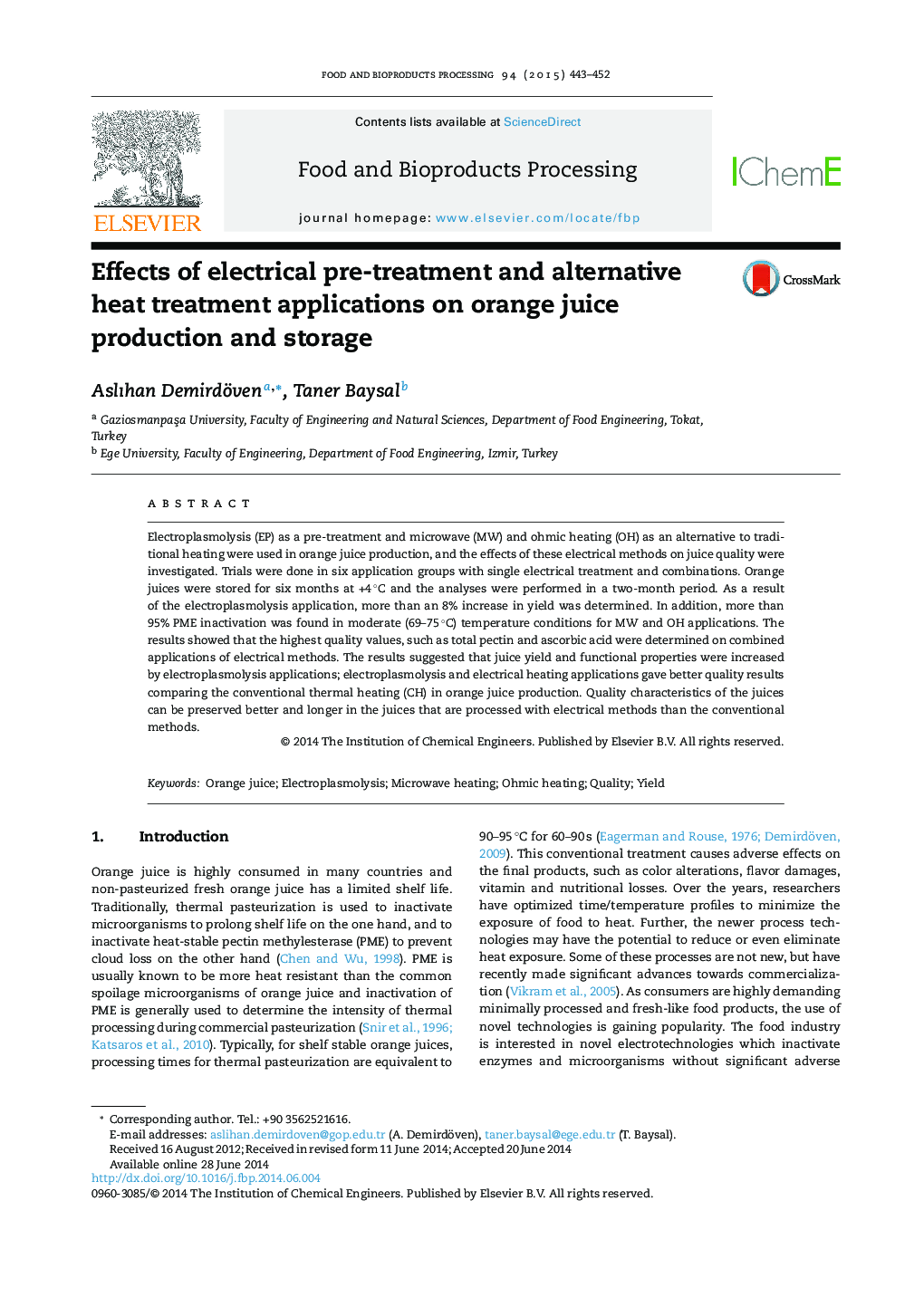| Article ID | Journal | Published Year | Pages | File Type |
|---|---|---|---|---|
| 18937 | Food and Bioproducts Processing | 2015 | 10 Pages |
•Electroplasmolysis was used as a pretreatment for increasing the yield of orange juice.•Microwave and ohmic heating were used as an alternative to traditional pasteurization.•More than an 8% increase in yield was determined by electroplasmolysis application.•More than 95% PME inactivation was found for microwave and ohmic heating at moderate temperatures.•Highest quality values such as total pectin and ascorbic acid were determined on combined groups.
Electroplasmolysis (EP) as a pre-treatment and microwave (MW) and ohmic heating (OH) as an alternative to traditional heating were used in orange juice production, and the effects of these electrical methods on juice quality were investigated. Trials were done in six application groups with single electrical treatment and combinations. Orange juices were stored for six months at +4 °C and the analyses were performed in a two-month period. As a result of the electroplasmolysis application, more than an 8% increase in yield was determined. In addition, more than 95% PME inactivation was found in moderate (69–75 °C) temperature conditions for MW and OH applications. The results showed that the highest quality values, such as total pectin and ascorbic acid were determined on combined applications of electrical methods. The results suggested that juice yield and functional properties were increased by electroplasmolysis applications; electroplasmolysis and electrical heating applications gave better quality results comparing the conventional thermal heating (CH) in orange juice production. Quality characteristics of the juices can be preserved better and longer in the juices that are processed with electrical methods than the conventional methods.
